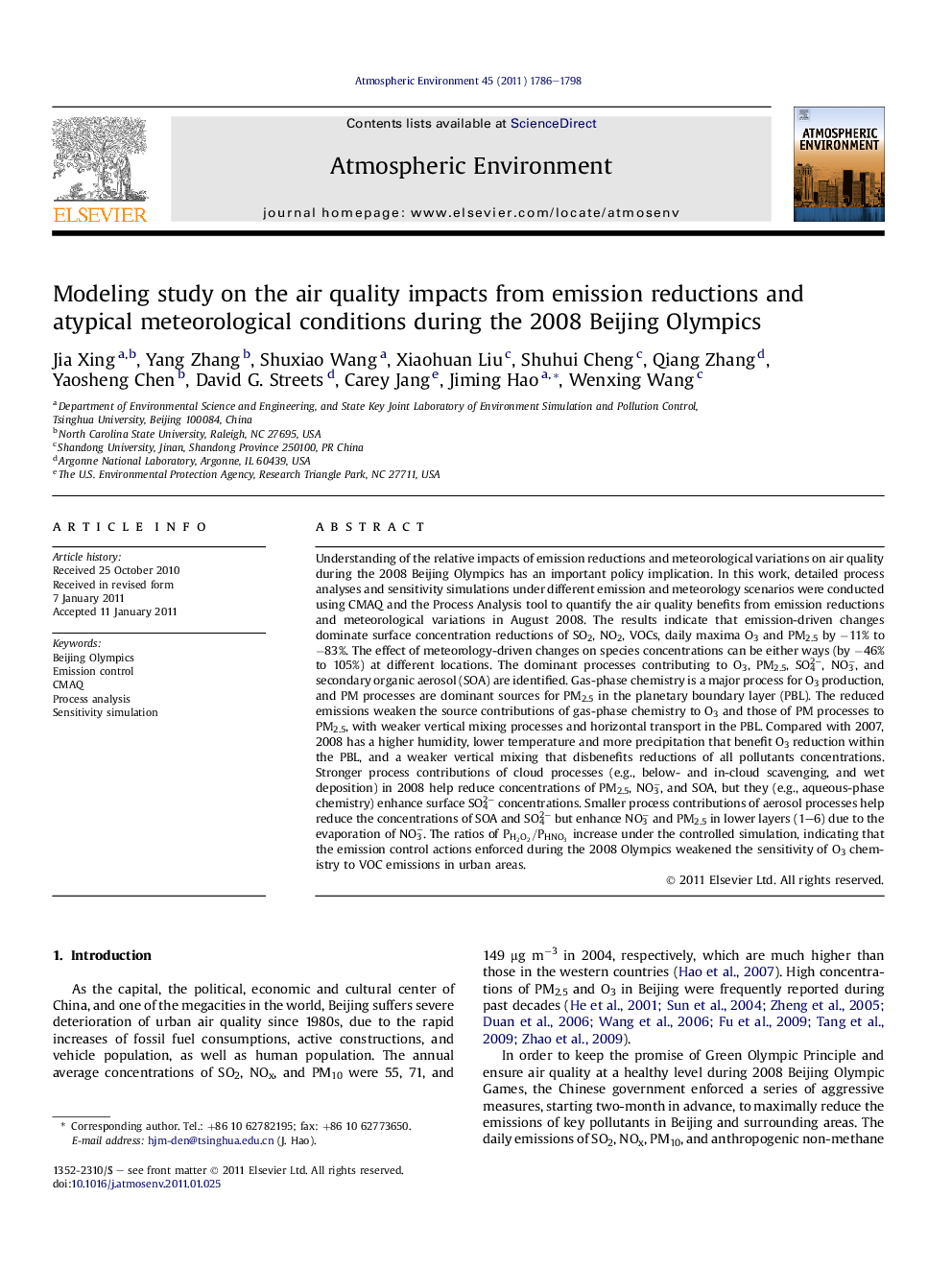| کد مقاله | کد نشریه | سال انتشار | مقاله انگلیسی | نسخه تمام متن |
|---|---|---|---|---|
| 4440073 | 1311046 | 2011 | 13 صفحه PDF | دانلود رایگان |

Understanding of the relative impacts of emission reductions and meteorological variations on air quality during the 2008 Beijing Olympics has an important policy implication. In this work, detailed process analyses and sensitivity simulations under different emission and meteorology scenarios were conducted using CMAQ and the Process Analysis tool to quantify the air quality benefits from emission reductions and meteorological variations in August 2008. The results indicate that emission-driven changes dominate surface concentration reductions of SO2, NO2, VOCs, daily maxima O3 and PM2.5 by −11% to −83%. The effect of meteorology-driven changes on species concentrations can be either ways (by −46% to 105%) at different locations. The dominant processes contributing to O3, PM2.5, SO42−, NO3−, and secondary organic aerosol (SOA) are identified. Gas-phase chemistry is a major process for O3 production, and PM processes are dominant sources for PM2.5 in the planetary boundary layer (PBL). The reduced emissions weaken the source contributions of gas-phase chemistry to O3 and those of PM processes to PM2.5, with weaker vertical mixing processes and horizontal transport in the PBL. Compared with 2007, 2008 has a higher humidity, lower temperature and more precipitation that benefit O3 reduction within the PBL, and a weaker vertical mixing that disbenefits reductions of all pollutants concentrations. Stronger process contributions of cloud processes (e.g., below- and in-cloud scavenging, and wet deposition) in 2008 help reduce concentrations of PM2.5, NO3−, and SOA, but they (e.g., aqueous-phase chemistry) enhance surface SO42− concentrations. Smaller process contributions of aerosol processes help reduce the concentrations of SOA and SO42− but enhance NO3− and PM2.5 in lower layers (1–6) due to the evaporation of NO3−. The ratios of PH2O2/PHNO3PH2O2/PHNO3 increase under the controlled simulation, indicating that the emission control actions enforced during the 2008 Olympics weakened the sensitivity of O3 chemistry to VOC emissions in urban areas.
► Emission controls are important despite of positive changes in meteorology.
► Emission controls benefit for all pollutants reductions.
► Effect of meteorology changes can be either ways at different locations.
► Synergistic controls on both NOx and VOCs are essential to reduce urban O3.
Journal: Atmospheric Environment - Volume 45, Issue 10, March 2011, Pages 1786–1798